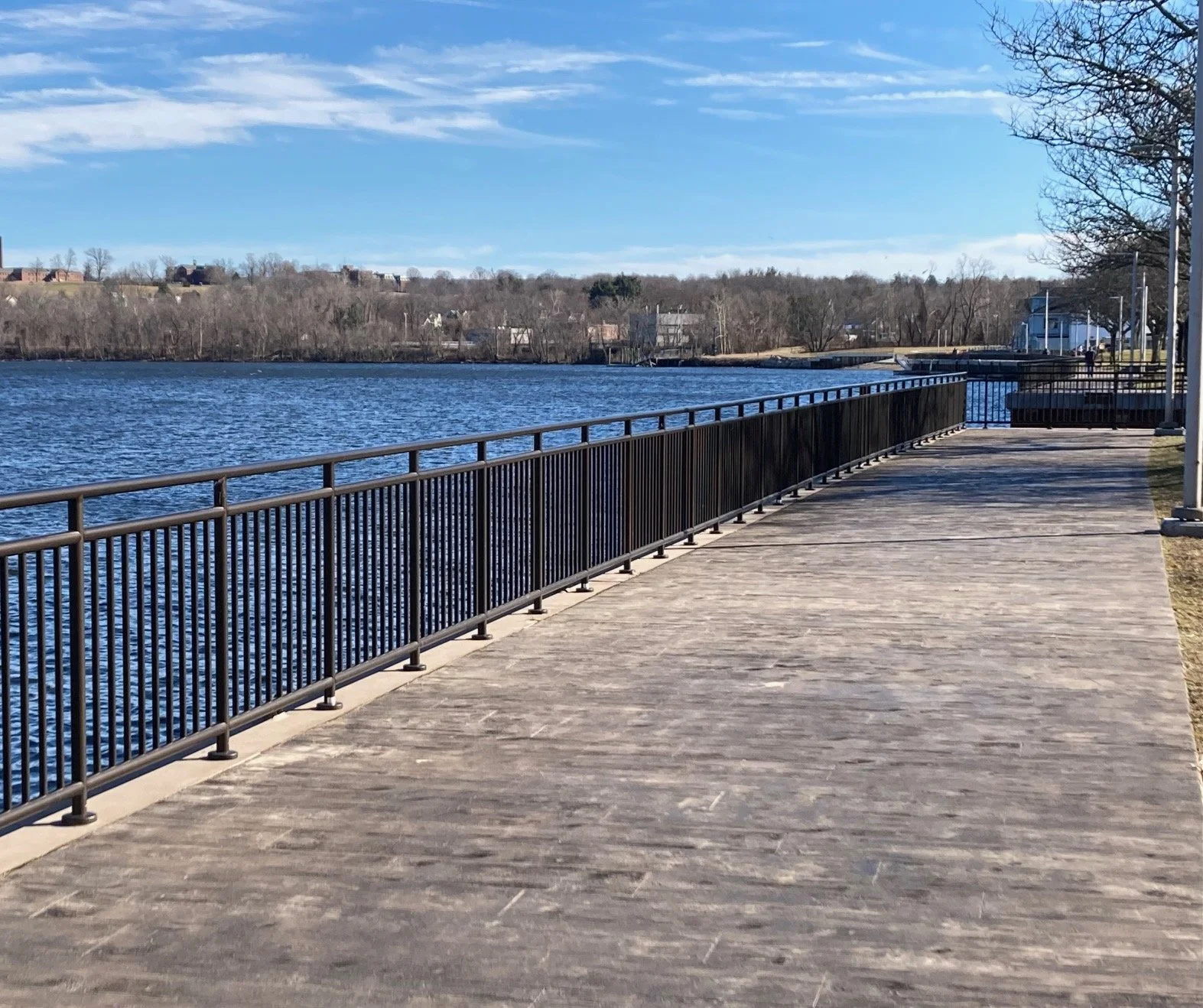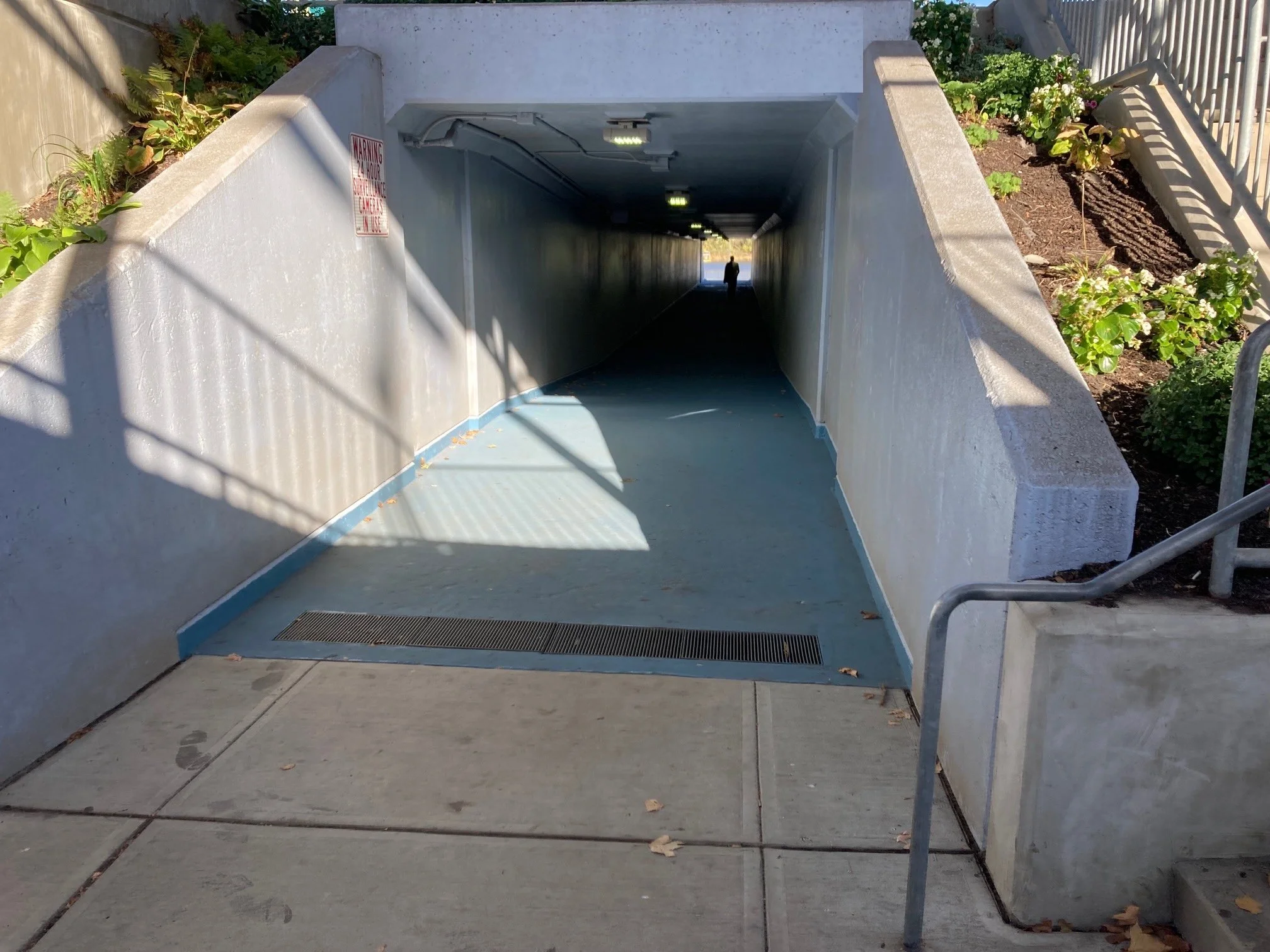About the Project
Welcome to TunnelVision, a project conceived by Middletown artist Kate Ten Eyck, and carried out in collaboration with multiple artists and community partners in Middletown, Connecticut. Through this project, local artists have been commissioned to respond to different aspects of the culture and history of Middletown, as well as the history of the land and natural world before human civilization, all through the medium of mosaic.
A central goal of the project is to connect local artists with diverse community groups working together to transform the Harbor Park pedestrian tunnel that passes under Route 9. This tunnel is the primary way a pedestrian can safely access the park and the Connecticut River from downtown Middletown. This project would result in the permanent installation of mosaics to the tunnel walls, turning the tunnel into an immersive community public art installation piece.
Throughout history, Middletown, Connecticut, has been shaped by its relationship to the Connecticut River. The river has provided food and transportation to indigenous people of this area for thousands of years, and subsequently became the point of entry for colonists. Middletown’s once thriving port supported trade and economic opportunity which in large part paved the city’s development. In the 1960’s, however, the construction of Route 9 severed the heart of the city from the river. Today, a pedestrian who seeks access to the river must walk through a depressing, long, and poorly lit industrial concrete tunnel.
What if we could transform the industrial concrete walls of the tunnel, and create a new destination that would draw people to Middletown, the downtown area, and the developing riverfront? The goal of Tunnel Vision is to completely cover the walls of the tunnel with a mosaic mural that explores who and what came before us and what continues to happen beneath our feet. It would investigate and inform how we are connected to our past and to each other through the earth – in social ways, in historic ways, and across deep time. The geology of this place has changed over time, and continues to change. Through this project artists, scientists, archeologists, and historians are coming together to tell a story of these changes, and along the way include the greater community in the creation.
The effect of entering the stairs and ramp to the tunnel will reflect the experience of an archeological dig, going back in time as the viewer goes deeper into the ground. Starting from the entrance to the ramp by Mellili Plaza, one would first see a cut away of the earth, and the worms, grubs, and fungi that currently live in the soil. Progressing down the ramp, evidence of our current civilization in the form of our non-biodegradable possessions buried in the earth. The next section of the tunnel would tell the story of European colonization, farming, trade, and industrialization as well as waves of migration. The base of the ramp would be dedicated to the indigenous people of central Connecticut, specifically the Wangunk. The entryway to the tunnel would be transformed into the virgin forest that existed before human habitation. Moving down the tunnel the viewer would see now extinct mammals, such as mastodons, before coming upon the glacier that buried Connecticut under thousands of feet of ice 20,000 years ago. The bulk of the subsequent tunnel would explore dinosaur bones and footprints, plate tectonics, and lava flows. Towards the end of the tunnel, the crust of the earth will give way to a view of what Harbor Park looked like 200 years ago when it was an active harbor.
Currently nine projects have been completed and are in storage awaiting installation. Those projects represent roughly 500 square feet of the 3000 square feet of wall space. Everything created up to now was done so with major support from the Connecticut State Legislature through funds from the American Rescue Plan Act, administered by the Department of Economic and Community Development, Office of the Arts.
Further support for this project has been provided by the Middletown Commission on the Arts, and the Artists Respond grant program, provided by the CT Department of Economic and Community Development, Office of the Arts, which also receives support from the National Endowment for the Arts, a federal agency.


